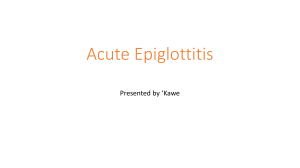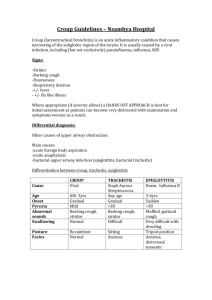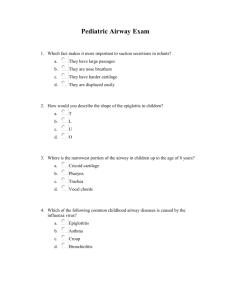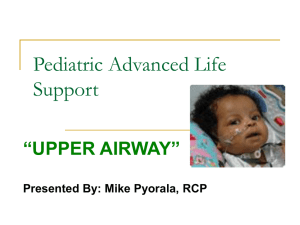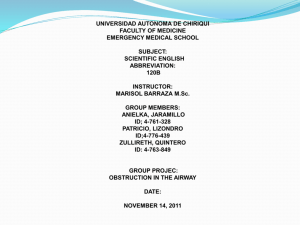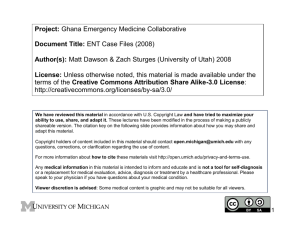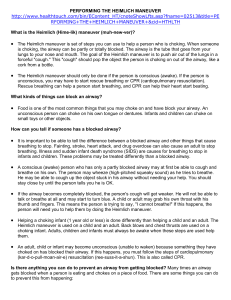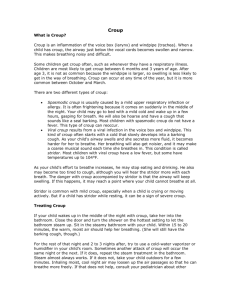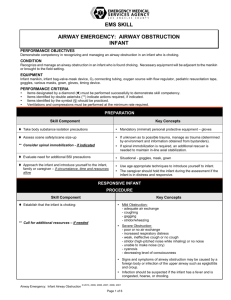word document () - Sni Valley Fire Protection District
advertisement
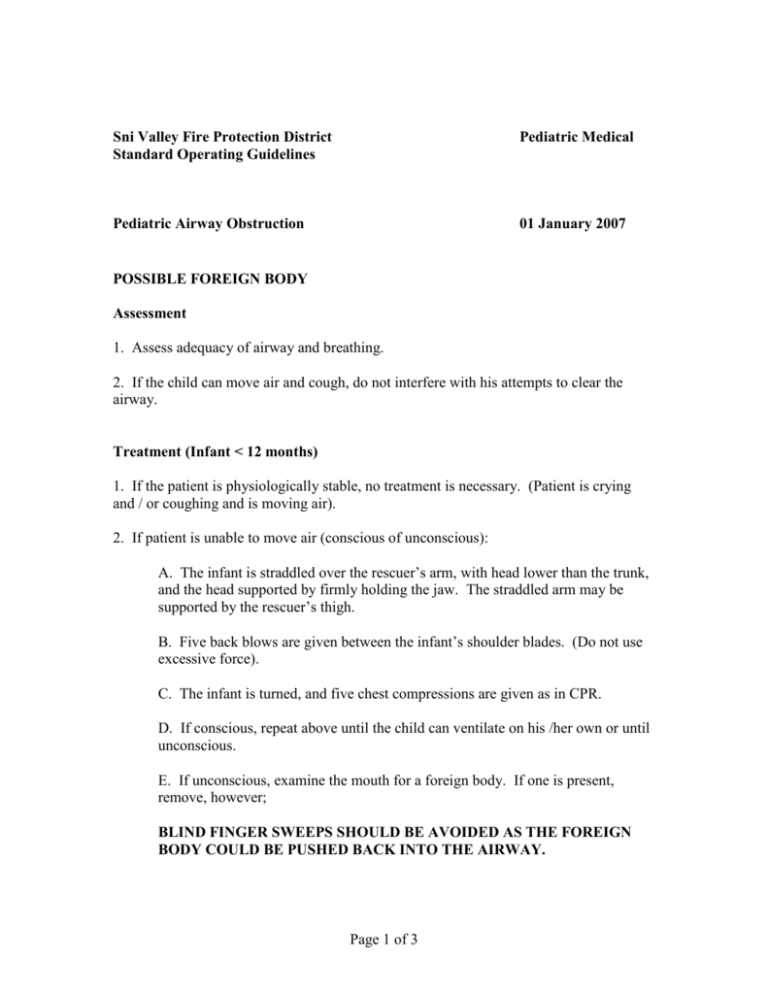
Sni Valley Fire Protection District Standard Operating Guidelines Pediatric Medical Pediatric Airway Obstruction 01 January 2007 POSSIBLE FOREIGN BODY Assessment 1. Assess adequacy of airway and breathing. 2. If the child can move air and cough, do not interfere with his attempts to clear the airway. Treatment (Infant < 12 months) 1. If the patient is physiologically stable, no treatment is necessary. (Patient is crying and / or coughing and is moving air). 2. If patient is unable to move air (conscious of unconscious): A. The infant is straddled over the rescuer’s arm, with head lower than the trunk, and the head supported by firmly holding the jaw. The straddled arm may be supported by the rescuer’s thigh. B. Five back blows are given between the infant’s shoulder blades. (Do not use excessive force). C. The infant is turned, and five chest compressions are given as in CPR. D. If conscious, repeat above until the child can ventilate on his /her own or until unconscious. E. If unconscious, examine the mouth for a foreign body. If one is present, remove, however; BLIND FINGER SWEEPS SHOULD BE AVOIDED AS THE FOREIGN BODY COULD BE PUSHED BACK INTO THE AIRWAY. Page 1 of 3 F. If the unconscious, attempt to ventilate. If unsuccessful, examine the airway direct with laryngoscope and remove the foreign body with Magill forceps. G. Continue the above steps until able to ventilate the child. H. Consider Pedia-Trake. Treatment (Child > 1 year) 1. If the patient is physiologically stable, no treatment is necessary. (Patient is able to speak and / or cough). 2. If the child is conscious, but can not speak or cough, use abdominal thrust. (Keep in mind that you are using the force for a child and not an adult). 3. If the child is conscious, kneel at the victim’s feet; place the heel of the hand against the victim’s abdomen above the umbilicus but below the xiphoid and press into the abdomen with quick, upward thrust. 4. Using the tongue-jaw lift to open the mouth, look in the mouth and remove foreign body if visualized. DO NOT USE BLIND FINGER SWEEPS. 5. If unconscious, attempt to ventilate. 6. If unable to ventilate, examine the airway directly with laryngoscope and remove the foreign body with Magill forceps. 7. Consider Pedia-Trake. CROUP VS. EPIGLOTTITIS 1. Croup is a viral syndrome which can affect children from infancy to 6 years old. Its onset is usually over several days, the fever is low grade, and the child has a hacking cough. Croup can be difficult to differentiate from Epiglottitis. It is best to transfer croup cases in a manner similar to Epiglottitis. 2. Epiglottitis is a potentially lethal airway obstruction caused by bacterial infection of the epiglottis. The epiglottis becomes swollen, partially or completely obstructing the airway. Most affected children are between the ages of 2 and 5 years. Epiglottitis is manifested by the onset of high fever, drooling and stridor. The child is usually found sitting in the “tripod” position. Treatment requires intubation by an anesthesiologist. The airway must not be manipulated as this can cause complete obstruction. Page 2 of 3 Assessment 1. DO NOT separate the child from the mother at any time unless the child is in respiratory failure. The anxiety and crying which can occur from the separation can lead to airway obstruction and respiratory arrest. 2. Allow the child to sit upright. 3. Assess patient for cyanosis, rate and quality of breathing. A crying child who is pink is usually a good sign. The children will usually have audible inspiratory stridor. 4. DO NOT look down the throat or take a blood pressure if the child is conscious. Treatment 1. Allow the parent to hold oxygen by the child’s face. 2. Transport quickly with the parent holding the child. Delay may lead to respiratory compromise. 3. Inform the base station physician that you are en route with a child with Croup vs. Epiglottitis. 4. If the child’s airway obstructs and the child becomes unconscious, ventilate with a pediatric bag and use 2-person bagging if necessary, this will usually provide ventilation. 5. If unsuccessful, consider intubation or Pedi-Trake. Page 3 of 3
